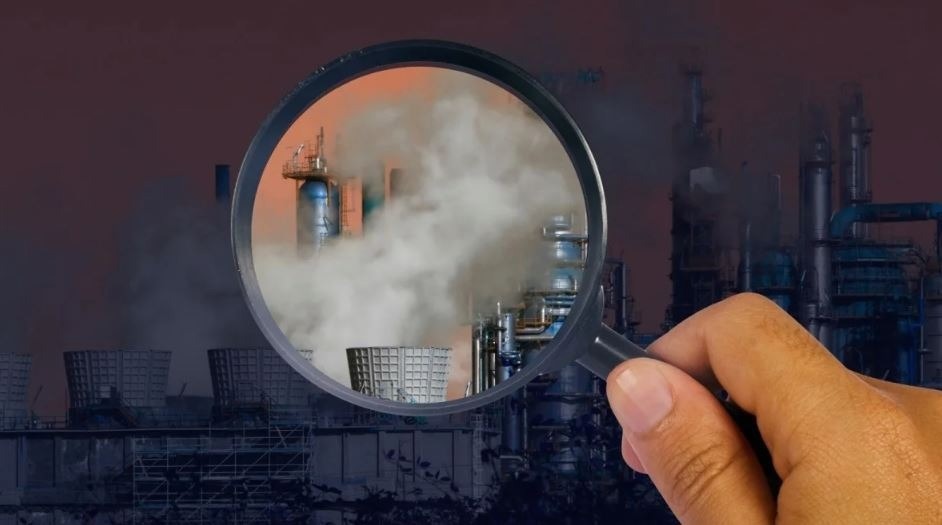A new instrument to combat global warming is expected to be released following the development of lightweight flexible light sensors that can image at the same time throughout a broad spectral range, from the visible to the infrared, with minimal optical components. This results in being ideal for satellites and drones employed to track greenhouse gas emissions.

Image Credit: Australian Research Council Centre of Excellence for Transformative Meta-Optical Systems (TMOS)
Traditional cameras employ complex optics and flat sensor arrays. They have bulk and hefty, complicated fabrication processes, and restricted spectral ranges. Subsequently, tracking greenhouse emissions with the use of satellites and drones is affluent, given operating and production costs, and the sensors may not sense all gases.
In a study published in Advanced Functional Materials, scientists at TMOS summarize their research on a new flexible photodetector that can sense visible to long-wave infrared radiation, which covers the complete spectrum of greenhouse gases with no requirement for complicated optical components.
Its production is scalable and simple, which reduces charges considerably. It functions at room temperature, eliminating any requirement for cryogenic cooling, which is not the scenario in normal mid-wave infrared cameras.
Conventional sensors that have flat arrays require multiple optical components to correct the distortion that occurs around the edges of an image taken with a flat sensor. This increases the size and the weight of the sensor. Flexible photodetectors will enable curved focal plane arrays mimicking the retina of the human eye, allowing you to capture images with a simple lens.
In addition, current technology requires different types of cameras to cover such a broad spectral range and requires cryogenic cooling in some spectral bands. They usually work with either the infrared spectrum or the visible one. Our detector allows imaging across both, at room temperature.
Sivacarendran Balendhran, Study Lead Author, University of Melbourne
Besides a small footprint and an ultra-broad spectral range, such new flexible photodetectors are simpler and more affordable to make than a majority of conventional technologies. Commercial infrared detectors include several elements—a sensor and the electronic circuits that transform the infrared signals.
The sensors employ vanadium oxide (VOx), which is complicated to grow as it needs temperatures over 450°.
The electronic circuits working in collaboration with the sensors are formed with the use of large-scale CMOS fabrication, requiring temperatures to be less than 200°. In a majority of scenarios, to fulfill the production needs of both parts, the infrared sensor is suspended from a bridge structure and kept within a vacuum pack. The isolation of the infrared sensor from the circuitry is efficient but results in the inflexibility of the detector.
The study group devised a new approach for developing the sensors with the use of VOx nanospheres cultivated as a powder by scientists at the University of Melbourne and later mixing it with alcohol. At low temperatures, this suspension can be dropped onto flexible circuitry, which negates the requirement for a vacuum pack, bridge, or complex optics.
Balendhran adds, “We’ve demonstrated the capabilities of our detectors in a curved focal line array. The next step in our research is to manufacture a curved focal plane array.”
Infrared detectors are an essential component in various fields such as telecommunications, imaging, sensing, and surveillance. The integration of IR detectors into flexible platforms offers numerous benefits across various industries, including wearable sensors in the med-tech field, high-performance cameras with increased field of view and sensitivity in defense and security, and lightweight drone-operated sensors for Australia’s agritech space. The simple and scalable material synthesis and device fabrication processes make our approach a game-changer for these applications.
Kenneth Crozier, Chief Investigator, University of Melbourne
Journal Reference:
Balendhran, S., et al. (2023). Flexible Vanadium Dioxide Photodetectors for Visible to Longwave Infrared Detection at Room Temperature. Advanced Functional Materials. doi.org/10.1002/adfm.202301790.